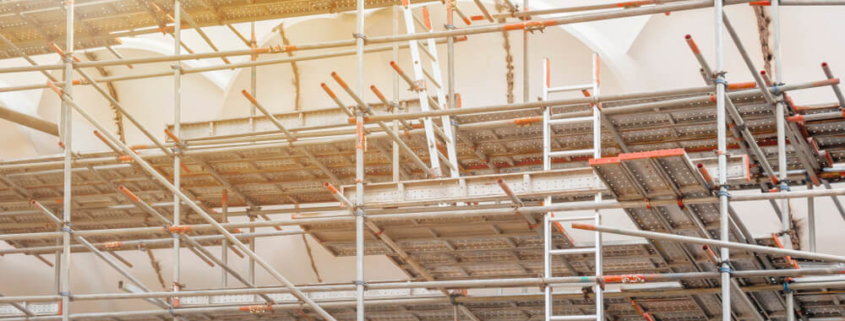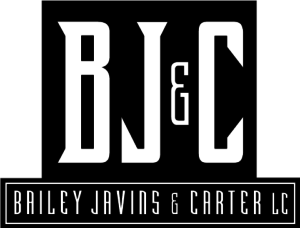Worker Safety – Staying Safe on Scaffolding
Working in the construction industry can be rewarding and dangerous at the same time. Sure, it pays well, but you never know when something could go wrong and someone suffers a serious or life-threatening injury.
This is particularly the case when it comes to working on or near scaffolding. Over two million construction workers use scaffolds every year, but they are incredibly risky. The Bureau of Labor Statistics (BLS) reports that scaffold accidents are the cause of roughly 4,500 injuries and over 60 deaths annually.
These complicated systems of aluminum pipes and platforms can be safe when used properly. Unfortunately, mistakes are far too common, and the consequences can be dire. Because of this, employers and contractors must do everything possible to protect workers from dangerous scaffolding accidents.
Common Causes of Scaffolding Accidents
Scaffolding is used to elevate workers and materials during construction, repair, and maintenance projects. If you walk around any construction site, you’re likely to see scaffolding on and around the buildings. Unfortunately, the failure of these systems can lead to serious injuries and even death.
Some of the most common causes of scaffolding accidents include:
1. Improper construction
The structure of your scaffold tower can be compromised by just one out-of-place bolt. Scaffolding should be erected by a competent team and should be suitable for the project. In some cases, a registered professional will need to come onto the job site to build the scaffolding.
2. Lack of guardrails
Too many workers are injured or killed falling from scaffolding at moderate to extreme heights. One of the things that can prevent these falls is proper guardrails.
3. Unstable planks
The planks on scaffolding are what workers stand on as well as what holds various equipment and materials. When planks are unstable or made of inferior materials, this can lead to a fall.
4. Inadequate training
A scaffolding could be in perfect condition, but workers must still be trained in how to use the equipment. Training should cover how to prevent falling objects, working from heights, getting on and off of scaffolding, and how to report any issues with the equipment.
5. No inspections
Any problems with a scaffolding could be overlooked if the equipment isn’t closely monitored. The equipment should be inspected at the start and end of every shift to identify issues that could lead to an accident.
Scaffold Safety Standards
The Occupational Health and Safety Administration (OSHA) creates safety standards that are meant to protect workers from harm. It provides guidelines for employers on a variety of issues, inspects job sites, and will issue fines if there are violations of its rules.
In its Worker Safety Series, OSHA has provided a long list of the things that employers should be doing to prevent scaffolding injuries. These include:
- Scaffolding must be erected on solid footing.
- Scaffolding must be rigid, sound, and sufficient to hold its own weight as well as four times the maximum intended load without displacement or settling.
- Unstable objects, such as boxes, concrete blocks, barrels, or loose bricks must not be used to support planks or scaffolds.
- Scaffolding must not be erected, moved, dismantled, or altered except under competent supervision.
- Scaffolding must be equipped with toeboards, guardrails, and midrails.
- Scaffolding accessories such as trusses, brackets, braces, ladders, or screw legs that are weakened or damaged from any cause must be immediately replaced or repaired.
- Scaffolding platforms should be tightly planked with material that is scaffold plank grade or equivalent.
- Suspension scaffolding that uses natural or synthetic rope must be protected from heat-producing sources.
- Inspection of the scaffolding must be done by a “competent person” at designated intervals.
- Prior to each shift and following any event that could affect its structural integrity, suspension scaffolding must have an inspection of rigging by a competent person.
- Workers must be educated about the dangers of using diagonal braces to prevent falls.
- Scaffolding must be at least 10 feet from electric power lines.
- Workers should not be allowed to work on scaffolding that is covered with ice, snow, or other slippery materials.
- Workers should not be allowed to work on scaffolding in high winds or inclement weather unless it has been determined to be safe by a competent person.
- Barrels, buckets, ladders, boxes, and other materials may not be used on a scaffolding to increase work height.
- Workers should use personal protective equipment (PPE) such as a rope and harness system, even when it isn’t required, to reduce the likelihood of an injury.
When Scaffolding Accidents Happen
Injuries from scaffolding accidents can be severe and even deadly. When one of these events happens on your job site, you’ll need to take immediate action. Even if your injuries don’t seem critical, you should seek immediate medical attention. Beyond this, the scaffolding must be inspected for safety, even if it didn’t collapse.
In many cases, a person injured in a scaffolding accident will be eligible for workers’ compensation. However, a personal injury suit could be possible against a third party, such as a contractor that isn’t your employer or a company that built the scaffolding or produced inferior materials. A personal injury lawsuit would also be appropriate if you were a bystander that was injured in a scaffold accident.
Injured in a Scaffolding Accident? Speak with an Atlanta Workplace Accident Attorney
If you or someone you love has been hurt or killed in a scaffolding accident, the experienced workplace accident attorneys at Bailey, Javins & Carter, L.C., can help you seek the justice and compensation you deserve from the parties responsible.
When you hire our firm, we will immediately launch an investigation into your accident and take the steps necessary to preserve evidence that will prove liability. This might include seeking an order to prevent the job site from destroying or dismantling a failed scaffolding as well as interviewing various witnesses and bringing in accident reconstruction experts.
Our Atlanta construction injury attorneys are dedicated to advocating for injured victims and their loved ones, and we will work hard to secure the highest possible settlement or award in your case. Contact our office today at (678) 981-5370 or reach out to us online to schedule a free consultation.




